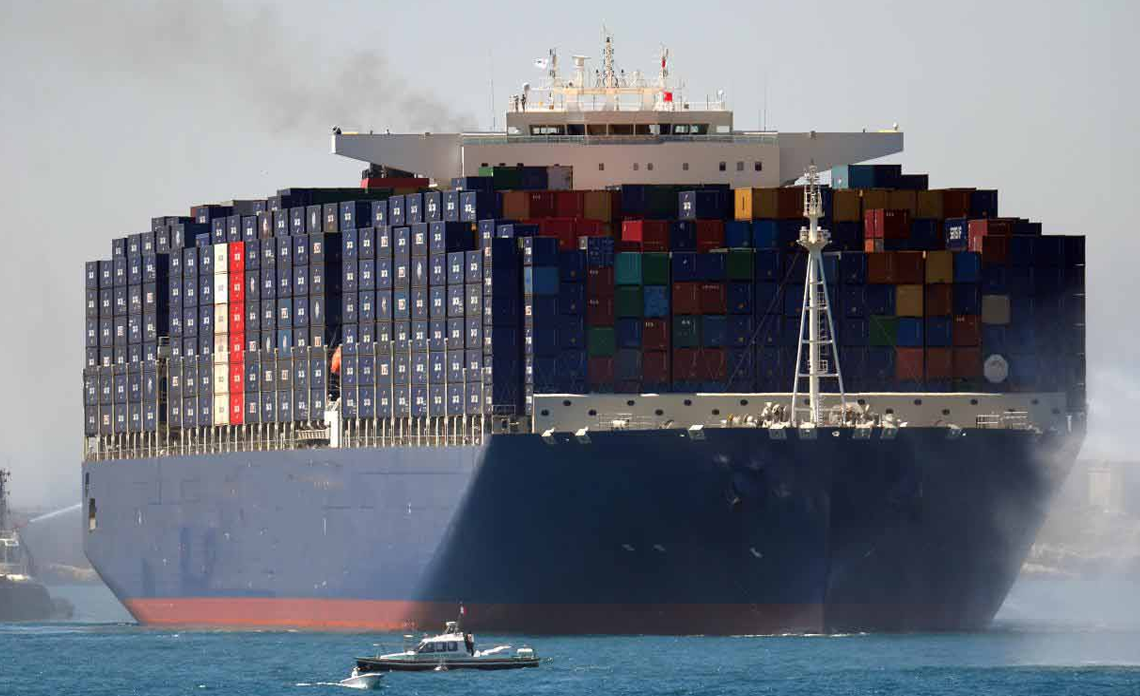Features of Sea Freight

Odak Logistics offers its customers the most suitable airway and maritime transportation options for both fair goods and export and import transportation, through its years of experience and reliable partners.
What is Sea Freight?
Sea freight refers to a mode of transport in which goods (or people) are transported by sea. In some cases, Sea freight may include pre- and post-shipment activities.
For centuries, humanity has used waterways to transport goods and people. Therefore, maritime transport owes its evolution to the development of international trade and the ever-increasing exchange of goods between countries. By definition, shipping is essentially international (apart from cruising along the coasts of the same country). Today, maritime transport is the main means of transportation used to transport raw materials (oil, coal, grain, etc.) over long distances.
The introduction of sea containers in the mid-1960s greatly accelerated the development of maritime transport. These standardized boxes stack on top of each other and can carry all kinds of items quite easily. Sea containers have other advantages as well; It reduces the risk of damage, breakage and theft (goods not visible from the outside) and reduces shipping costs.
In recent years, maritime transport has been experiencing difficulties due to the growing growth of ships and their ability to carry more cargo, mainly because large ships require too much cargo to fill and have trouble accessing different trade ports around the world.
What are the Features of Sea Freight?
Maritime transport is a more attractive means of transport compared to other modes of transport, thanks to:
Carrying capacity: Several hundred tons of goods can be transported on a single ship;
Lasting effectiveness: At sea, nothing or practically nothing can stop ship traffic.
However, maritime transport suffers from fairly slow movement (between 30 and 50 km/h for most ships). Therefore, it requires much longer delivery times than road or air transport.
There are two main shipping methods available: demand-driven shipping (also known as tramping) and line shipping. The first is the search for a ship to transport the goods. Second, the exporter chooses a line freight offer with a specific route and frequent ports and shares the ship with other exporters.
Containerization revolutionized shipping, starting in the 1970s. “General cargo” includes goods packed in boxes, crates, pallets and drums. It is intermodal or commodal when a cargo is transported in more than one model.[1]https://en.wikipedia.org/wiki/Maritime_transport
For anyone shipping international cargo, it is well known that maritime shipping is an option that offers shippers shipping services at an economical price point. As one of the oldest options for freight transport, it is also one of the most affordable, as oceans and waterways cover most of our planet. In fact, more than 90 percent of the goods transported in the world are carried by the international shipping industry. But when it comes to alternative options such as air, road and rail transport, why should a shipper consider sea transport? The reason for this is hidden in the five advantages listed below;
Advantages of Sea Freight
Economical: The shipping industry offers the most competitive freight costs to shippers, especially over long distances. By comparison, some estimates suggest that sea freight shipping costs are generally four to six times cheaper than air. With statistics like this, it’s easy to argue that ocean shipping is the cheapest international shipping option.
Sufficient: No matter the size of your shipments, shipping companies can usually meet your needs. Smaller shipments can be grouped together with other cargoes to fill a container, allowing cost sharing of shipping services. Larger cargo can fill one or more containers, giving shippers unmatched bulk options. In fact, ships are the ideal way to transport high volumes of cargo as they are designed to carry large quantities of goods or raw materials.
Capable of oversized, heavy, and bulky cargo: A key advantage of ocean freight shipping is the ability of shipping companies to handle oversized, heavy, or bulky cargo – often referred to as bulk or Non-Trailer (NIT) loads. Such cargoes can include large vehicles, equipment, building materials and more. Very large cargo, often too heavy or large for air freight or even road freight, is not a problem on many freighters.
Safe: Ships are designed to safely transport dangerous goods and dangerous goods. The industry is knowledgeable about the transport of such goods and has regulations in place to ensure the safety of the ship, crew, cargo and the environment. Cargo losses from accidents in transit have been falling steadily as maritime safety has improved, and have dropped significantly over the past decade. Containers are designed to be sealed and locked in transit for extra security.
Environmentally friendly: Compared to maritime transport, air and many other modes of transport have a much higher carbon footprint – a definite disadvantage for the environment. On the other hand, ships provide the most carbon-efficient mode of transport and produce fewer grams of exhaust gas emissions per tonne of cargo transported than any other mode of transport. These emissions, which are currently low, continue to trend downward as technology advances, new ships enter service, and liquefied natural gas (LNG)-powered options are deployed.
If you would like to meet with a Odak Logistics maritime freight expert who can help you make the right shipping decisions, we will be happy to assist you.
Referanslar
| ↑1 | https://en.wikipedia.org/wiki/Maritime_transport |
|---|























